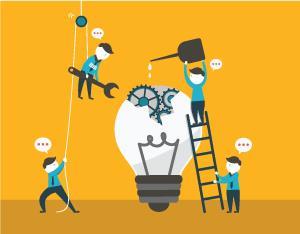Let students own their learning

Problem-based learning (PBL) was first implemented nearly 50 years ago. It remains a popular instructional technique for those seeking to give their students the opportunity to develop the skills required for success in their studies and in their future careers. Such skills include critical thinking, evaluating information sources and teamworking, among many others. In this article, Overton and Randles describe the development and implementation of a novel pedagogy, dynamic problem-based learning (dPBL).
Traditionally, problem-based learning activities are based on scenarios that are defined by the instructor, with all groups of students working with the same scenario and datasets. Although PBL has clearly been very successful, it is suggested that these sorts of ‘rigid’ scenarios are somewhat artificial and not therefore reflective of real-world problem-solving, where the context and scope of a problem may vary over time. In dPBL, groups of students receive different datasets or are provided with different routes through the problem, meaning that each group tackles an individualised problem.
The study probed the impact of dPBL on two cohorts of first year chemistry students (160 per year) at Hull University, UK. The four scenarios were all based around sustainable development and included designing a microgeneration sustainable village and analysing the costs of producing biofuels for a fleet of 42 buses. Variety was introduced by allowing groups to select six ‘experts’ from a pool, which were effectively links to online papers of relevance, thus ensuring that each group began with a different baseline of supporting information. After the first cycle of independent study, reflection and reporting back, the tutor provided each group with a set of cards that contained new information regarding economic or logistical issues or changes to legislation, which the groups then had to respond to by adjusting their plans as they worked through the final stages of the activity.
Students were very positive about dPBL, suggesting that the dynamic element created a more authentic real-life problem, and reporting a high degree of skills development. Furthermore, students gained an appreciation of key elements of sustainable development, most notably quantitative elements such as energy cost and usage, and planning and budgeting. The authors suggest that dPBL leads to students taking more ownership over their learning, and that dynamic elements could easily be introduced into pre-existing scenarios, opening the approach to anybody already using PBL in their teaching.
References
T L Overton and C A Randles, Chem. Educ. Res. Pract., 2015, DOI: 10.1039/c4rp00248b









No comments yet